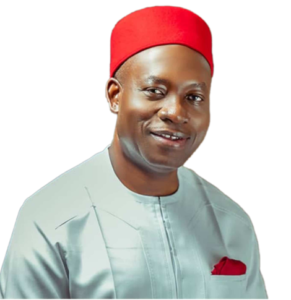
Only those who think that continuity and change are incompatible will cry over the recent changes in certain education policies in the State of Osun. To see the changes as anything beyond the necessity of responding to the yearnings of the people is to marry them onto some pre-existing differences. The same template applies to those who may want to gloat over the changes. In the final analysis, they are what they are-stakeholder-driven modifications to a broad range of policies affecting primary and secondary education.
True, the ultimate decision to implement the changes rests with Governor Gboyega Oyetola, but everyone knows that to ignore the yearnings for change in those policies is to lose political capital. Unlike his predecessor, Rauf Aregbesola, who spent other forms of capital, especially social capital, such as dancing and politicking with the people, Oyetola has mainly the political capital of his office to spend, and he has to spend it very carefully. If nothing else, the geopolitics of his election warrants caution.
The naked truth about Aregbesola’s education policies is that they were initially preferred to the pre-existing rot in the sector. This was especially true of the novel model high schools, free school uniforms, free school feeding, the Opon Imo tablet, payment of WAEC fees for final year students, and the mesmerizing calisthenic displays. However, as the policies took shape, criticisms crept in. This was especially true of school mixing, renaming, and reclassification as well as the size of the model schools. The unusualness of some of the policies became more and more irksome.
Nevertheless, in several opinion polls, Aregbesola’s popularity soared by the end of his first term due to a combination of his social capital, his social protection programmes, and the overall response to his development projects across the state.
However, complications began to set in as the state fell into cash deficit due to a dip in oil prices, which negatively affected the state’s federal allocations. It was a combination of savings, borrowings, and sheer ingenuity that carried him through the second term.
As the 2018 election cycle set in, the criticisms of the education policies were once again amplified by the opposition parties, especially by the candidate of the Social Democratic Party, former Senator Iyiola Omisore, who denigrated the education policies in their entirety.
As is usually the case in a democracy, citizens often take advantage of democratic transitions to seek change. It is, therefore, not surprising that various stakeholders in the education sector would seek change to the education policies about which they had expressed misgivings, leading to the developments discussed last week on this column (see Continuity and change in Osun’s education policies, The Nation, March 12, 2020).
The changes notwithstanding, Aregbesola’s legacies in Osun endure and are being perpetuated by the present administration. This is not surprising for several reasons. First, Aregbesola was the first governor to successfully complete two terms of office in the history of the state. He had time to stamp his achievements on the state not only in the education sector, where the model schools, Opon Imo, and Omoluabi ethos have become emblematic and enduring, but also in other sectors, including infrastructure, health, social protection, and the governance template inherited by the succeeding administration.
Second, he brought into the politics of the state and left behind the core of political office holders in the administration that succeeded him. The present political officeholders, who also served on his cabinet, include the Governor himself; the Chief of Staff; and the Commissioners for Finance; Works; Health; and Economic Planning, Budget and Development. Indeed, a number of the other cabinet members also served in Aregbesola’s administration in one capacity or the other.
No wonder then that, despite strident criticisms by the opposition, the Opon Imo tablet, one of the signature projects of the Aregbesola administration endures. Furthermore, the present administration has commenced the remodelling of various schools across the state in order to stand them in good stead against the model schools, thereby further enhancing the value of Aregbesola’s investment in education.
The infrastructure projects being pursued by the present administration are largely continuations of existing or earmarked projects. Accordingly, the present administration has expended close to 4 billion Naira of its meagre resources to continue uncompleted projects, such as Osogbo-Ila Odo, Gbonga-Akoda, and the Osogbo ring road, locally nick-named Baba Ona. At the same time, work is ongoing, or completed on earmarked roads in Ede and Ejigbo, among others.
Similarly, the ongoing construction or remodelling of Primary Health Centres across the state are earmarked projects for which funds only became available at the inception of the new administration.
Furthermore, the discontinued airport project, on which a lot has been expended, is being revived, rather than completely abandoned.
The continuation of the above-named projects serve two related purposes. By focusing on projects uncompleted or earmarked by the Aregbesola administration, Oyetola is signalling the celebration of his former boss’s legacies, while, at the same time, fulfilling his campaign promise of continuity.
This may sound trite when placed against the time-honoured assumption that government should be a continuum. It is, however, very significant when viewed against the general practice in this country, by which new governors abandon their predecessor’s projects and embark afresh on their own new ones as indications of unique achievements. Such unnecessary braggadocios are antithetical to the spirit of democratic governance, where institutions are supposed to endure and projects are meant to be sustained by succeeding administrations.
To be sure, Aregbesola’s ardent critics have been drinking from the pool of these changes, spitting their mouthful on everybody’s face. He sure deserves some of the criticisms particularly for not securing sufficient stakeholder input at the beginning and for not heeding their objections when they were loudest. For policies as broad and far-reaching as those he established in education, a bottom-up approach and cut-to-size projects are the best ways to guarantee acceptance, manageability, and sustainability.
However, when placed against the totality of Aregbesola’s overall legacies in the state, it is clear that those who now seek to throw the baby with the bathwater are either mischievous or ignorant of the overall picture.
By Prof. Niyi Akinnaso












